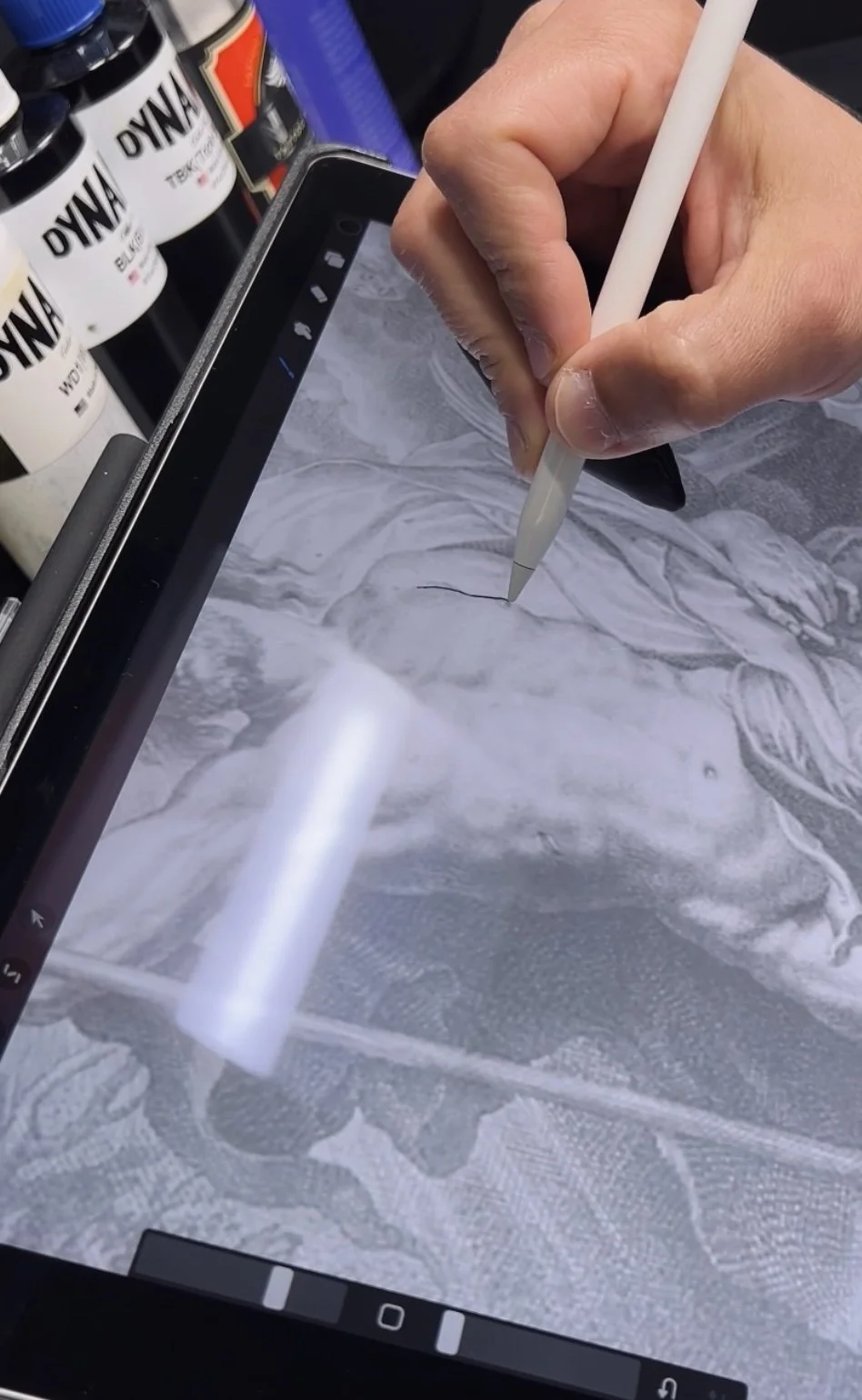Why the tattoo design should be a collaboration between artist and collector, rather than the artist’s homework?
Image tracing with drawing app.
It may not the best idea for a tattoo artist to design a piece entirely on their own, hoping the client will like it when the appointment day arrives. Yet, that’s often how it goes: the artist meets the client for a consultation, then spends hours working solo on a design, only to present it later and cross their fingers that it matches the client’s expectations.
In my experience, his traditional approach can create more problems than it solves.
What if the client isn’t thrilled with the design? In some cases, the appointment has to be rescheduled, or the artist scrambles to make edits while the client waits. Worse, the client may feel pressured to accept the design—out of politeness or guilt—despite not being fully happy with it.
So, is there a better alternative? Yes, designing the tattoo together, in real time as a collaborative process.
When I explain that I don’t create final tattoo designs in advance, some clients are surprised or even concerned. But here’s why this collaborative method works better for both the artist and the client:
1. Last Minute Changes of Mind
Clients often show up with new ideas or changes to the concept we discussed during the consultation. Designing on the day of the appointment allows us to stay flexible and responsive—avoiding wasted time and effort on outdated designs.
2. Avoiding Miscommunication
Tattoo terminology like “contrast,” “composition,” or “realism” can mean different things to different people. Most clients aren't familiar with these terms, and that’s completely okay. Just like a doctor doesn’t expect patients to speak in medical jargon, we shouldn’t expect clients to speak fluent artist. Being present during the design process helps us clarify their vision in real time.
3. Encouraging Client Involvement
When clients are actively involved in the design process, we avoid confusion and ensure the final artwork reflects their original intent. I guide clients through style options and visuals, helping them identify exactly what they’re drawn to, so the result feels personal and intentional.
4. Ensuring Proper Composition
A great tattoo must fit the body, not just look good on paper. Poor composition can make even the best design look out of place, like a sticker slapped on the skin. That’s why I take photos of the area being tattooed and adjust the design to follow the body’s shape and flow. I also resize as needed to ensure the piece looks natural and balanced.
In Summary
Tattooing isn’t just about creating art—it’s about translating someone’s idea onto their skin in a way that feels right for them. That’s why I believe the design process should be a true collaboration, not a behind-the-scenes guessing game. Working together leads to better tattoos, clearer communication, and a more meaningful experience for everyone involved.
